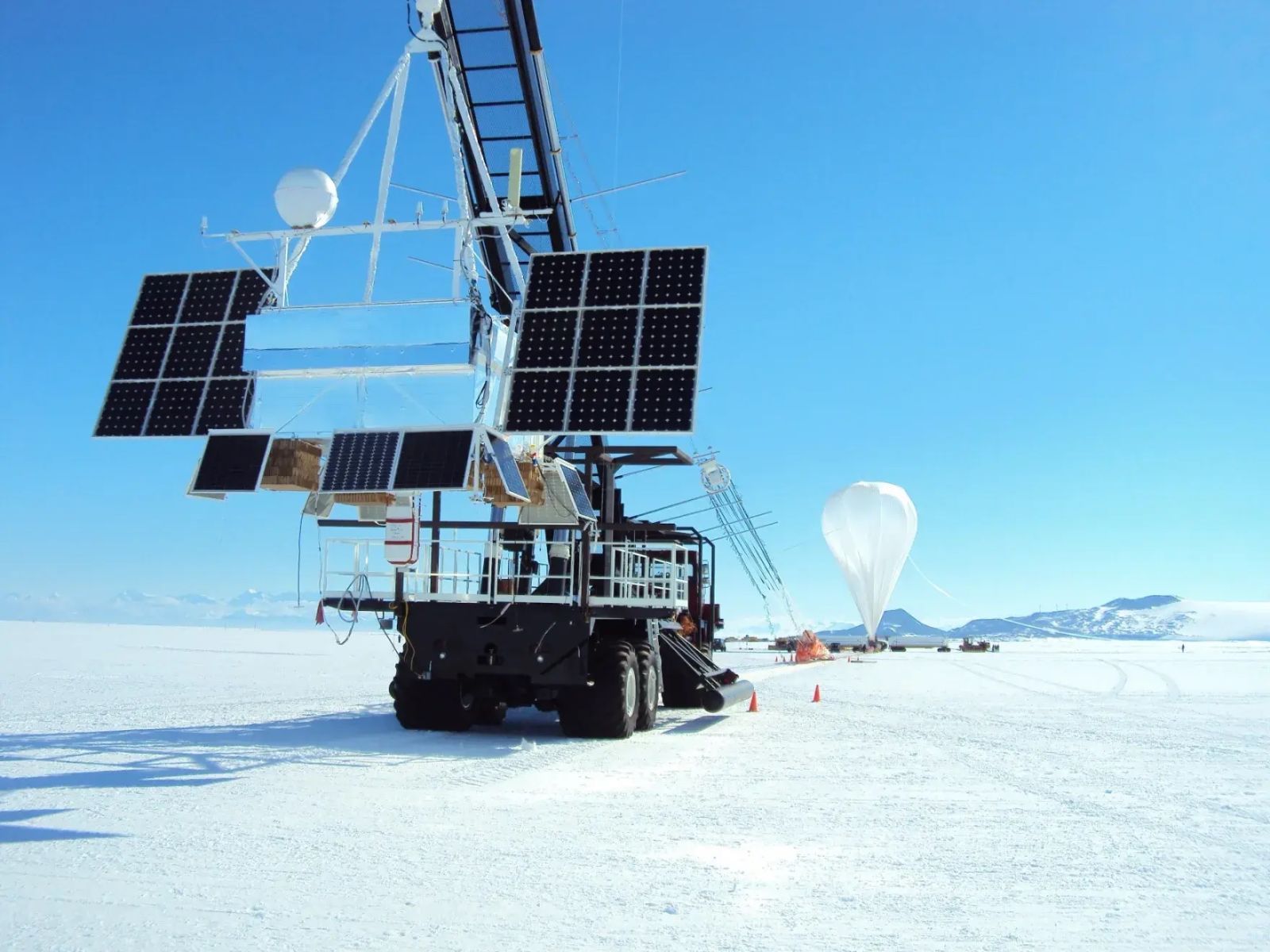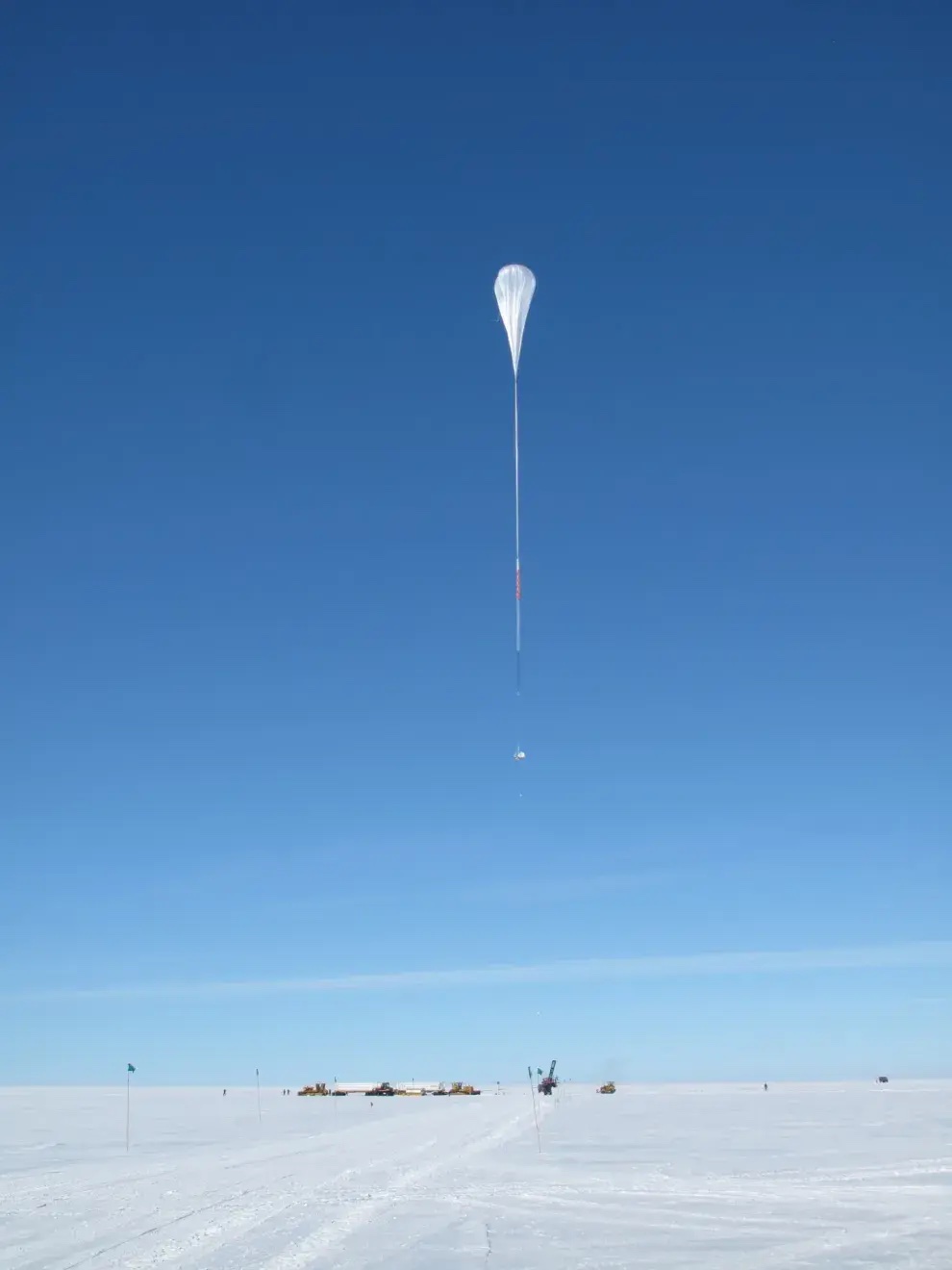
Photo credit: Stephane Coutu (Penn State University). This 2011 image shows a similar cosmic ray-detecting balloon from the CREST launch in Antarctica.
Searching for cosmic rays 40 km above ground
By Catarina Chagas, Research Outreach and Events Specialist
We can’t feel it or see it without proper equipment, but the Earth is constantly bombarded by tiny particles from outer space, including neutrinos (subatomic particles with no electric charge and very little mass) and cosmic rays (also very small, but electrically charged). Astrophysicists around the world are constantly thinking of ways to detect and study such particles, in the hope that they can teach us about the universe and its history.
From Nobel Prize-winning underground experiments in a nickel mine in Canada to equipment buried in Antarctic ice, Queen’s researchers have been part of international efforts to unravel the science of particles, and Nahee Park (Physics, Engineering Physics and Astronomy) has travelled to Sweden for yet another exciting experiment. This time, instead of looking underground, she’ll keep her eyes on the sky supporting the launch of a balloon that will carry a cosmic ray detector to the upper limits of the atmosphere, nearly 40 kilometres above the ground.
The HELIX experiment, led by the University of Chicago and developed in collaboration with other universities in the US, Japan, and Canada, including Queen’s, will inflate a helium balloon of approximately 40 million cubic feet – a football field could fit inside it! – to lift a one tonne detector measuring 1.6m x 1.6m x 2.3m. After launch from the Esrange Space Center, the balloon is expected to fly from five to seven days over the Atlantic Ocean before landing in Canada.
Cosmic air showers
Unlike neutrinos, cosmic rays interact with the Earth’s magnetic field, which changes their trajectories. Also, most cosmic rays are blocked by Earth’s atmosphere and broken down into even smaller particles – muons, electrons, and neutrinos – that shower down to the ground. There is a limit to how much we can learn about cosmic rays by studying their byproducts from the ground, which is exactly why HELIX wants to capture them directly, high up in the air.

Dr. Nahee Park, Queen's Department of Physics, Engineering Physics and Astronomy
“We want to learn about where the cosmic rays are coming from, and we want to understand what in the universe creates these particles,” says Dr. Park, who is also a member of the McDonald Institute at Queen’s. Dr. Park explains that HELIX will focus on cosmic rays that were likely created within our galaxy, which carry one hundred million times more energy than the photons visible to the human eye.
Science, with a bit of luck
While the research team is getting ready to launch the balloon up to the sky, the exact date of launch is still unknown, and luck might play a role in defining it. After all the hard work that goes into assembling and testing the equipment, researchers will have to wait for perfect weather conditions to launch, avoiding wind or other elements that can deviate the balloon from its course or even from taking off. “In 2011, I participated in a similar launch in Antarctica; we got there in October but didn’t launch the balloon until Christmas Day,” says Dr. Park.
HELIX’s remote launching location in northern Sweden was chosen because of the polar vortex, a predictable flow of air that concentrates cold air near the pole and will “guide” the balloon to Canada. Researchers will follow the flight from the ground, monitoring the trajectory and functioning of the equipment until landing, which will be made with support of a parachute. A recovery crew will be waiting for the ballon, disassembling the equipment to ship it back to Chicago.
The experiment received funding from NASA through the Columbia Scientific Balloon Facility, the Canadian Space Agency, and the National Science and Engineering Research Council of Canada. After HELIX’s first flight, the team expects to retrieve the equipment, study the collected data, and prepare for a new and longer balloon trip in Antarctica.

Photo credit: Nahee Park. The balloon, carrying Indiana University's Cosmic Ray Electron Synchrotron Telescope (CREST), was launched on December 25, 2011.

